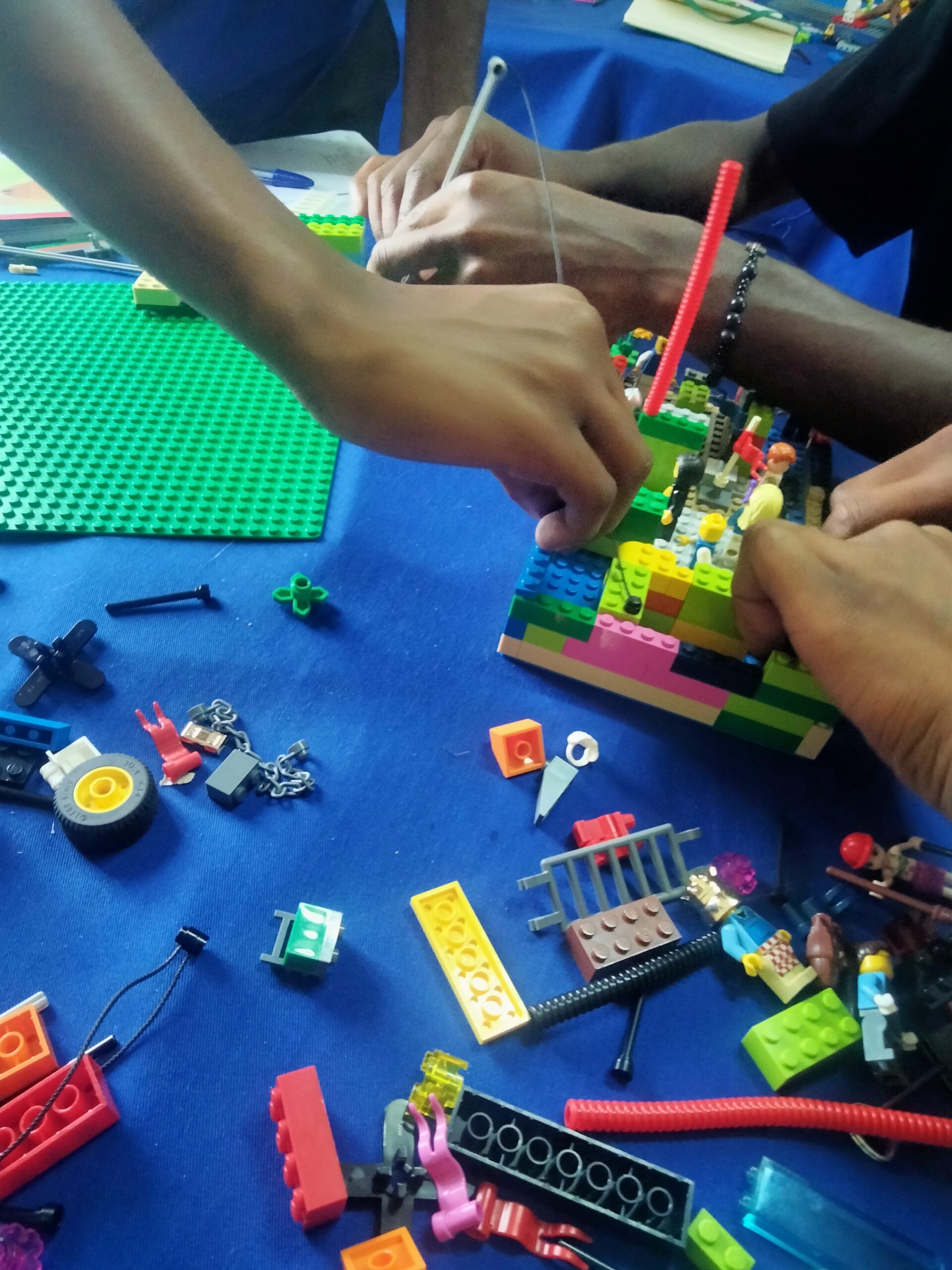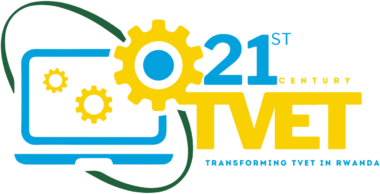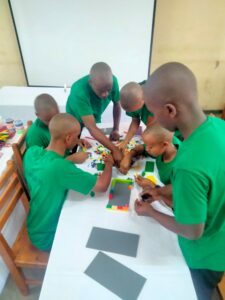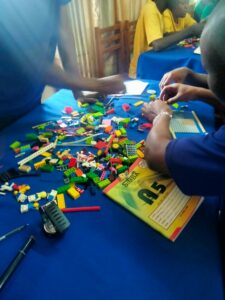TRAINING
PROJECT
PURPOSES
Τhe project proposes to work with three TVET schools in Butare, located in the district of Huye. The decision to work with three concrete TVETS is because it is well documented that significant organisational changes demand the participation, involvement, and commitment of all the key stakeholders (leadership, teachers,
students, public and private organisations). By concentrating the effort to modernise the local TVETs will have an impact in the provision of graduates equipped with creativity, problem solving, collaboration, digital technologies, entrepreneurial and sustainability skills for employability and self-employment.
The graduates will contribute to promotion of sustainable economic growth and employment through the creation of new businesses and jobs for and by young people in the Huye district and hopefully reduce the migration to the capital or other more developed urban regions.
More to come soon!
TRAINING
FACE TO FACE
Digital Competences course
Equipping teachers with Digital skills and hacks to increase their productivity with Google apps and Artificial intelligence tools.
Course Description:
The Digital Competences course is designed to train TVET teachers in essential 21st-century digital skills to enhance their productivity and teaching effectiveness. The hands-on training will focus on practical applications of Google for Education tools and other productivity hacks. It will provide teachers with the knowledge and skills to streamline workflows and improve student engagement and collaboration.
Over three days, participants will gain proficiency in Google docs, Google Drive, Google Forms, and Google Meet and will be introduced to a Screen recording tool to help them create engaging content with Voice-over. Additionally, they will be introduced to other relevant resources to boost their creativity as teachers. By the end of the training, teachers will be empowered to leverage these digital tools to optimise their daily tasks.
Learning Objectives:
- Enhance productivity and collaboration using Google Docs
- Create and customise Google Forms for assessments, surveys, and feedback collection.
- Apply AI tools like Chat GPT and Gemini to support teaching and administrative tasks.
- Learn to organise files and folders in Google Drive
- Creating and managing Google Meet
STUDY VISITS
COMING SOON!
E-LEARNInG
Three Courses take place, each one with three Modules:
Entrepreneurship course
- Introduction to entrepreneurship (what does entrepreneurship means? Why is it important, and what makes you an entrepreneur?)
- How can teaching build on entrepreneurship?
- How can students work with and benefit from entrepreneurship?
“Many entrepreneurs start a new venture by solving a problem that is significant, offering some value that other people would appreciate if the product or service were available to them. Other entrepreneurs, in contrast, start a venture by offering a “better mousetrap” in terms of a product, service, or both. In any case, it is vital that the entrepreneur understand the market and target segment well, articulate a key unmet need (“pain point”), and develop and deliver a solution that is both viable and feasible. In that aspect, many entrepreneurs mitigate risks before they launch the venture.”
The learning objectives for this course are:
- Learn the basics about entrepreneurship
- Gain inspiration and learn about possibilities to bring entrepreneurship into class
- Learn about ways in which students can work with an entrepreneurial mindset
When you have gone through this course you will be able to:
- Explain the entrepreneurial mindset and why it is important to bring this mindset into class
- Develop ways in which entrepreneurship can be implemented in your area of teaching
- Provide knowledge to students and inspire them to work entrepreneurially

For some, preparing for an entrepreneurial journey may seem like going on a river-rafting adventure that combines beautiful scenery with some exciting, but perhaps frightening, challenges. (credit: “Hands Up” by Jeramey Jannene/Flickr, CC BY 2.0)
Creative Thinking course
- Introduction to Creative Thinking
- How can teaching build on Creative Thinking?
- How can students work with and benefit from Creative Thinking?
|
“It can be important to know and to remember that “fostering creativity is a means to address real-world problems, and almost always, it feeds into broader goals, for example, employability, educational, company innovation, or personal development. While there is no one-size-fits-all solution to teaching and learning creativity, the most popular techniques mimic the real world, using problem-based, game-based, experiential, and project-based tools, and focus on the creative process rather than the outcome.” |
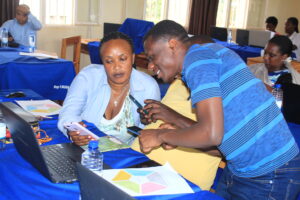 |
The learning objectives for this course are:
- Learn the basics about Creative Thinking
- Gain inspiration and learn about possibilities to bring Creative Thinking into class
- Learn about ways in which students can work with a Creative Thinking – mindset
When you have gone through this course you will be able to:
- Explain the Creative Thinking- mindset and why it is important to bring this mindset into class
- Develop ways in which Creative Thinking can be implemented in your area of teaching
- Provide knowledge to students and inspire them to work Creative Thinking
Watch the video What is Creative Problem Solving? https://www.youtube.com/watch?v=QbxyiUG5RRI
|
“Creativity is the ability to see the world in new ways, find hidden patterns, make connections between seemingly disparate things and generate new ideas. Innovation often drives creativity, but creativity does not always lead to innovation. A creative and innovative entrepreneur can identify opportunities and create new value for their customers or clients. To be a creative and visionary entrepreneur, you must have the proper mindset.
“Convergent thinking focuses on finding one well-defined solution to a problem. Divergent thinking is the opposite of convergent thinking and involves more creativity. In this piece, we’ll explain the differences between convergent and divergent thinking in the problem-solving process. We’ll also discuss the importance of using both types of thinking to improve your decision making. In practice, here’s what these different types of thinking might look like:
Divergent thinking: If the copy machine breaks at work, a divergent thinker would try to determine the cause of the copy machine’s malfunction and assess various ways to fix the problem. One option may be to call a technician, while other options may include looking up a DIY video on YouTube or sending a company-wide email to see if any team members have experience with fixing copy machines. They would then determine which solution is most suitable” |
|
Sustainability course
- Introduction to Sustainability (what does Sustainability means? Why is it important)
- How can teaching build on Sustainability?
- How can Sustainability be taught in class?
“The Sustainable Development Goals comprise a global agenda to end poverty, protect the planet, and ensure all people enjoy peace and prosperity.
“Adopted by all United Nations Member States in 2015, the 17 Sustainable Development Goals—or SDGs or Global Goals as they are sometimes called—have 169 targets that countries are attempting to reach by 2030 at the latest.
This is why the Goals are also referred to as the 2030 Agenda, which countries resolved to undertake with “bold and transformative steps which are urgently needed to shift the world onto a sustainable and resilient path. As we embark on this collective journey, we pledge that no one will be left behind”.
The learning objectives for this course are:
- Learn about the Sustainability Goals
- Gain inspiration and learn about possibilities how to bring sustainability into class
- Learn about ways in which fellow teachers can work with teaching styles fostering a sustainable mindset
When you have gone through this course you will be able to:
- Explain the sustainable mindset and why it is important to bring this mindset into class
- Develop ways in which Sustainability can be implemented in your area of teaching
- Provide knowledge to fellow teachers and inspire them to work with new teaching styles
Watch the video and be inspired how one of your colleagues explains why sustainability goals are important and how to establish a dialogue around these goals as part of your teaching
Digital Competencies Course
- Digital Competencies Course
- Introduction to Digital Competencies (what does Digital Competencies means? Why is it important, and what makes you competent in the digital world?)
- How can teaching build on Digital Competencies?
- How can students work with and benefit from Digital Competencies?
“What makes someone ready or willing to choose Digital Competencies over becoming an employee of an established business or a small business owner?
It takes confidence, courage, determination, resilience, and some know-how to select Digital Competencies as a career as well as the recognition of the opportunity. An entrepreneur is defined as someone who not only recognizes an opportunity but who also is willing to act on that opportunity.
Both actions are required. We might identify an opportunity, but many people do not act on the idea. Confidence, courage, and willingness are necessary to take that first step”
The learning objectives for this course are:
- Learn the basics about Digital Competencies
- Gain inspiration and learn about possibilities to bring Digital Competencies into class
- Learn about ways in which students can work with a digital competencies
When you have gone through this course you will be able to:
- Explain the digital competencies and why it is important to bring this mindset into class
- Develop ways in which digital competencies can be implemented in your area of teaching
- Provide knowledge to students and inspire them to work digitally.
Watch a short video to have a look how collaborative learning and feedback can be coupled as reflective learning practice
WORKSHOPS
